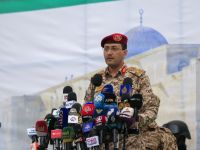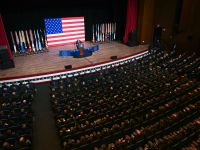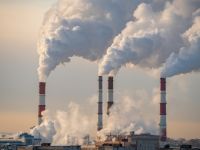Latest discovery in the deepwater Makassar Strait is the West Seno oil/gas field which flowed at a combined rate of nearly 20,000b/d and 18.6mmcfd. Another discovery is the Merah Besar structure, where the Prentis-1 well test results yielded 5.6mmcfd gas and 145b/d of condensate.
The Kuantan block, occupying a total area of some 5500km2, lies primarily in Riau Province, onshore Central Sumatra. This block is located 100km south of the giant Minas field, operated by Caltex, and 20km immediately to the southwest of a string of oilfields along the productive Lirik Trend.
Indonesia has 60 Tertiary sedimentary basins and sub-basins with the potential for hydrocarbon generation and trapping. They cover an area of more than 2 million km2. So far, 36 basins have been explored in detail.
Hydrocarbon reserves have been found largely in the western part of the archipelago where most exploration has taken place.
Physiographically, the Indonesian archipelago can be divided into western and eastern regions, separated by a 200m isobath from offshore Kalimantan in the Makassar Strait to offshore Bali in the Lombok Strait.
Roughly 30 percent of the offshore basins in western Indonesia and 80 percent of those in the east are classified as deep-sea basins
The western region comprises Sumatra, Java and Kalimantan and the smaller islands in between. This region is often referred to as the main part of the Sunda Shelf.
Hydrocarbons in Tertiary basins in this area are principally confined to the perimeter of the continental margins. Sedimentary basins in the western region are mostly located onshore or in shallow water.
Many of the prolific Tertiary basins in Sumatra, Java and Kalimantan can be classified as in mature stages of exploration, with production from some fields in decline.
Back-arc basins and deltaic basins are the main oil and gas producers in western Indonesia.
The North Sumatra Basin is renowned for the Arun gas field and the Central Sumatra Basin for the giant Minas and Duri oil fields.
By one estimate, production from back-arc basins has accounted for 78 percent and 27 percent respectively of Indonesia's total crude oil and natural gas output.
East Kalimantan is another important oil and gas producing area, while other accumulations lie in South Sumatra, the Northwest Java Sea, and offshore East Java and North Bali.
The eastern region covers the principal islands of Sulawesi, Maluku and Irian Jaya, and includes the Arafura, Banda and Timor seas.
This region lies on the Sahul Shelf, which stretches northwards of the Australian continent. Oil and gas discoveries in eastern Indonesia have been from both Tertiary and Pre-Tertiary reservoir rocks.
Most of this region's sedimentary basins are poorly explored, located in remote areas, in deep waters or other geographically complex regions that can be considered frontier.
Currently the main areas of industry interest appear to be those with Australian crustal affinity, such as Irian Jaya and the Arafura Sea, with exploration plays similar to those of the Australian North West Shelf Mesozoic and Palaeozoic basins.
The Timor Sea, that unique and highly prospective area straddling the Indonesian/Australian boundary, is expected to be a new target for exploration.
Recent exploratory drilling successes have been achieved in Mesozoic reservoirs in the zone of co-operation (ZOCA), that section of the Timor Gap under joint Indonesian and Australian development, and now within the potential jurisdiction of East Timor.
PSC evolution:
Since its introduction in 1965, the petroleum sharing contract (PSC) has formed the basis for exploration and development of Indonesia's hydrocarbon resources.
Made more lenient in 1976, in order to encourage oil companies to step up their exploration activity, the PSC was modified again through four incentive packages between 1988 and 1993.
The PSC represents the dominant contractual arrangement and, in general, it allows the contractor to gain after tax and cost recovery profit of 15 percent - 35 percent for oil and 30 percent - 45 percent for gas.
An incentive package issued in 1989, the second of its kind, addressed the equity split for marginal fields, oil produced from pre-Tertiary reservoir rocks, Tertiary enhanced oil recovery (EOR) projects, and investment credit incentives for deep-sea contract areas.
The third incentive package, put in place in 1992, was intended to stimulate gas exploration activity in both conventional and frontier areas, while the fourth, instituted a year later, provided for an increase in the investor's share after tax reduction for exploration in eastern Indonesia and other frontier areas.
The DMO was increased from 15 percent to 25 percent of export price after the first five years. First Tranche Petroleum (FTP) was reduced from 20 percent to 15 percent of production taken before deduction of cost recovery.
The after-tax split for exploration in frontier areas and in water depths greater than 1500m was made more favourable, with the government take reduced to 65 percent for oil and to 60 percent for gas produced.
There are three derivatives of the PSC; the joint operating agreement/joint operating body (PSC-JOA/JOB), applied to prospective areas that have been explored; the technical assistance contract (TAC), for small existing fields and the enhanced oil recovery (EOR) contract.
Although the trend in the evolution of these production regimes has been toward more liberal terms, there has been unrelenting pressure from industry for further relaxation of the terms.
Major gas projects:
Gas is rapidly becoming the hydrocarbon fuel of choice in Asia. This can readily be seen in Indonesia by the number of major gas development projects under way.
One of these is Tangguh, which will greatly increase the quantity of LNG that can be exported.
Two other noteworthy undertakings, the West Natunas gas transmission pipeline and a gas export pipeline from Sumatra, both to supply Singapore, will no doubt eventually form part of the much-heralded pan-Asian gas grid.
The Tangguh project is slated to be Indonesia's next LNG centre.
Embracing three PSCs - Wiriagar, Berau and Muturi - Tangguh's gas fields are located on and offshore of the western section of Irian Jaya, known as Kepala Burung, the Bird's Head.
Discovered in 1990, the Tangguh fields contain 14.4tcf of proven reserves, with an additional 5.4tcf of possible reserves identified.
Majority shareholders BPAmoco/Arco, in co-operation with Pertamina, will build eight natural gas liquefaction plants to supply India and Asia Pacific markets, principally China.
Operations are scheduled to start in 2002, when sales contracts will be signed with prospective buyers. Pertamina's share in the project is to be determined after production starts.
Tangguh guarantees Indonesia's continuing domination of the global LNG industry. In 1999 alone, a total of 27 million tonnes were produced by the Badak Plant in Bontang, East Kalimantan, and the Arun plant in Aceh.
Although all production has been exported to Japan, South Korea and Taiwan, new business is anticipated with Thailand, India, China, the Philippines and Pakistan.
The West Natuna field, located in the South China Sea between Borneo and peninsular Malaysia, will supply 325 mmscfd of natural gas to Singapore's Jurong Island petrochemical hub through a 640km subsea pipeline. Under a 22-year agreement, first gas delivery will commence in April 2001.
Conoco is operator of the pipeline for the West Natuna Group of PSC contractors, which includes Gulf Canada Resources and the UK's Premier Oil.
The South China Sea's Natuna D-Alpha gas project, with estimated commercially recoverable gas reserves of about 46 tcf and long on hold because of the immense costs and technical challenges involved, has been in the spotlight again.
Indonesian president Abdurrahman Wahid revived hopes recently when he ordered the Mines and Energy Ministry and Pertamina to review the giant gas project.
Pertamina, which holds a 24 percent stake in the Natuna D-Alpha gas field with ExxonMobil holding the rest, has said it would carefully study the options for development of the reservoir when the PSC expired in 2004, should no commercial recovery have started.
Another pipeline from Indonesia is to supply Singapore with 150 mmscfd of gas beginning in 2003, increasing to 350 mmscfd by 2009, for a total of 20 years.
Originating from three PSCs in South Sumatra - the Corridor and South Jambi B blocks operated by Gulf Indonesia subsidiaries, and the Jabung block - the gas will reach landfall in Singapore by subsea pipeline. Gas reserves are put at 2.27tcf.
Investment for the project is estimated to be about $1 billion, of which $700 million is to develop the gas fields and gas plants and $300 million is for the pipeline to Singapore.
The Bayu-Undan gas recycle project is developing reserves of 400 million barrels of condensate and liquefied petroleum gas (LPG) and 3.4tcf of natural gas in the Timor Gap zone of co-operation.
Operated by Phillips Petroleum through a subsidiary, the $1.4 billion project will involve production and processing of wet gas, separation and storage of condensate, propane and butane, and re-injection of dry natural gas back into the reservoir.
First liquids production from Bayu-Undan is scheduled in late 2003 and full commercial production in early 2004.
New directions:
Indonesia, although as yet unable to bring about significant changes in PSC terms, has shown enterprise in two contracts signed with neighbouring countries this year.
In order to more economically obtain refined petroleum products and help secure domestic oil supplies, Pertamina is having some 100,000b/d of crude processed by four refineries in Singapore operated by ExxonMobil, Shell, BP and Singapore Petroleum.
In Malaysia, Pertamina and Petronas have signed a landmark agreement under which Petronas will process 20,000 barrels of crude oil for Pertamina and buy natural gas from the West Natuna Sea area for 20 years.
Helpful as these signs of new flexibility on the part of Indonesia may be, for Asia's only Opec member country the big questions remain: When will the touted new petroleum fiscal regime come into effect and what form will it take?
By John Mueller
© 2001 Mena Report (www.menareport.com)







